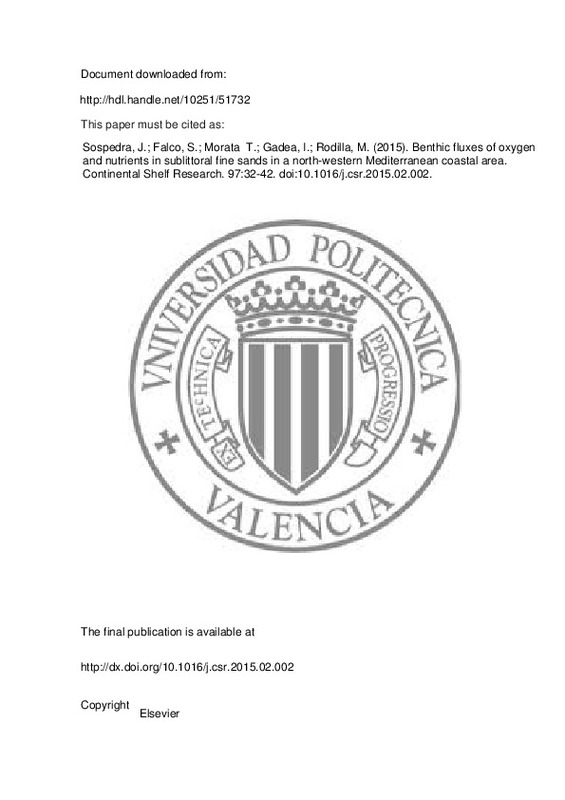JavaScript is disabled for your browser. Some features of this site may not work without it.
Buscar en RiuNet
Listar
Mi cuenta
Estadísticas
Ayuda RiuNet
Admin. UPV
Benthic fluxes of oxygen and nutrients in sublittoral fine sands in a north-western Mediterranean coastal area
Mostrar el registro completo del ítem
Sospedra, J.; Falco, S.; Morata, T.; Gadea, I.; Rodilla, M. (2015). Benthic fluxes of oxygen and nutrients in sublittoral fine sands in a north-western Mediterranean coastal area. Continental Shelf Research. 97:32-42. doi:10.1016/j.csr.2015.02.002
Por favor, use este identificador para citar o enlazar este ítem: http://hdl.handle.net/10251/51732
Ficheros en el ítem
Metadatos del ítem
| Título: | Benthic fluxes of oxygen and nutrients in sublittoral fine sands in a north-western Mediterranean coastal area | |
| Autor: | Sospedra, J. Morata, T. Gadea , I | |
| Entidad UPV: |
|
|
| Fecha difusión: |
|
|
| Resumen: |
[EN] Traditionally, benthic metabolism in sublittoral permeable sands have not been widely studied, although these sands can have a direct and transcendental impact in coastal ecosystems. This study aims to determine oxygen ...[+]
|
|
| Palabras clave: |
|
|
| Derechos de uso: | Reserva de todos los derechos | |
| Fuente: |
|
|
| DOI: |
|
|
| Editorial: |
|
|
| Versión del editor: | http://dx.doi.org/10.1016/j.csr.2015.02.002 | |
| Agradecimientos: |
|
|
| Tipo: |
|







![[Cerrado]](/themes/UPV/images/candado.png)


